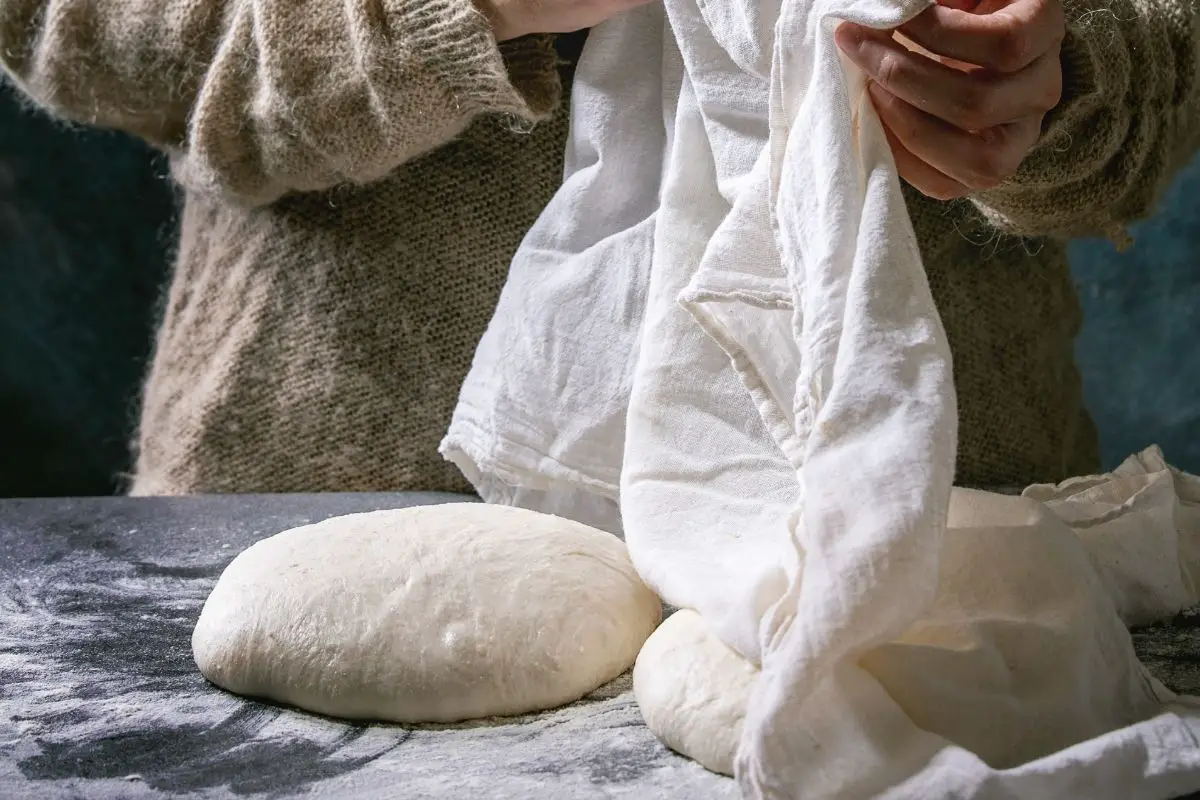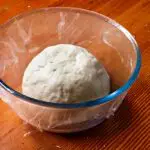Have you ever wondered why your bread dough needs to sit and rise before baking?
In this article, we’ll explore the concept of leaving bread dough to rise overnight.
We’ll go over the science behind dough rising, the pros and cons of overnight rising, and the best methods to get delicious, fluffy bread in the morning.
The Science Of Bread Dough Rising
Yeast And Its Role In Dough Rising
Yeast is a tiny organism that plays a big role in the baking process. When yeast ferments the sugars in the dough, it produces carbon dioxide.
This is what makes the dough rise and become lighter. You can use either active dry yeast or instant yeast, but the important thing is to make sure the yeast is fresh and active.
Why Your Bread Dough Needs To Sit And Rise Before Baking
As we just said, the process of rising allows yeast to ferment and produce carbon dioxide, which makes the dough expand and become lighter. This is what gives bread its soft, spongy texture.
The amount of time you let the dough rise and its fermentation process can greatly impact the final product.
If you don’t let it rise enough, your bread might come out dense and heavy. But let it rise for too long and it could become overly airy and collapse.
Factors Affecting Rising Time
There are a few things that can impact how quickly the yeast ferments and how long the dough takes to rise.
Temperature and humidity are two key factors. If your kitchen is too hot, the dough will rise too quickly and could end up over-proofed. On the other hand, if the air is too dry, the dough might not rise at all.
Moreover, when the carbon dioxide gets trapped in the dough, and makes it expand. This process changes the structure of the dough and impacts the flavor, texture, and overall quality of the bread.

So, Can You Leave Bread Dough To Rise Overnight?
Yes, you can leave bread dough to rise overnight.
This is often referred to as a “cold rise” method and it involves refrigerating the dough to slow down the fermentation process.
This can result in a more complex flavor and a better texture in the finished bread, but there are also potential risks involved in leaving the dough out for an extended period of time.
It’s, therefore, important to follow proper techniques and guidelines to ensure the safety and success of overnight rising.
Overnight Rising Of Bread Dough
Advantages And Disadvantages Of Leaving Dough To Rise Overnight
Leaving the dough to rise overnight has its advantages and disadvantages.
On the plus side, it allows the yeast to work slowly and steadily, resulting in a more complex flavor and a better texture in the finished bread.
Additionally, it saves time in the morning, as you can pop the dough in the oven first thing and have fresh, warm bread for breakfast.
On the downside, there’s always the risk of over-fermentation and spoilage if the dough is left out for too long.
How To Prepare Dough For Overnight Rising
To prepare dough for overnight rising, you’ll want to make sure it’s well-kneaded and shaped into a ball or loaf.
Then, cover it tightly with plastic wrap and place it in the refrigerator. Make sure the dough is at the correct temperature when you put it in the fridge. It should be around 40°F (4°C).
Safety Concerns And Potential Risks Involved
When it comes to safety, there are a few concerns to keep in mind when leaving the dough to rise overnight.
Bacteria can grow on the dough if it’s left out for too long, so it’s important to keep the dough refrigerated and follow proper food safety guidelines.
In addition, you want to make sure the dough doesn’t over-ferment and collapse, so monitor it carefully and bake it as soon as possible in the morning.
What Are The Methods For Overnight Rising?
1. The Cold Rise Method
The “cold rise” method is the most popular method for leaving the dough to rise overnight.
This involves refrigerating the dough for several hours or overnight, which slows down the fermentation process.
The dough is then taken out of the fridge, shaped as desired, and allowed to warm up to room temperature before being baked.
This method results in a more complex flavor and a better texture in the finished bread.
2. The Room Temperature Rise Method
Another option is the “room temperature rise” method, where the dough is left to rise at room temperature for several hours or overnight.
This method allows the yeast to work more extensively, producing lighter and airier bread.
However, it also carries a higher risk of over-fermentation and spoilage, so it’s important to monitor the dough closely and to bake it as soon as it’s fully risen.
Which Is Best: The Cold Rise Or The Room Temperature Method?
The results of these two methods can vary greatly depending on the recipe, the yeast, and the temperature and humidity of your kitchen.
In general, the cold rise method produces a denser, more flavorful bread, while the room temperature rise method results in a lighter, airier loaf.
So, ultimately, the choice between these methods comes down to personal preference and the type of bread you’re looking to make.
The Bottom Line
Having read this article, you now understand that leaving bread dough to rise overnight can result in a delicious and complex loaf with a great texture.
Nevertheless, it’s important to understand the science of dough rising, the advantages and disadvantages of different methods, and how to prepare the dough for overnight rising to end up with perfect bread.
For bakers, we recommend trying both the cold rise and room temperature rise methods to see which one you prefer, but, in either case, make sure to follow proper food safety guidelines, monitor the dough carefully, and bake it as soon as it’s fully risen.










